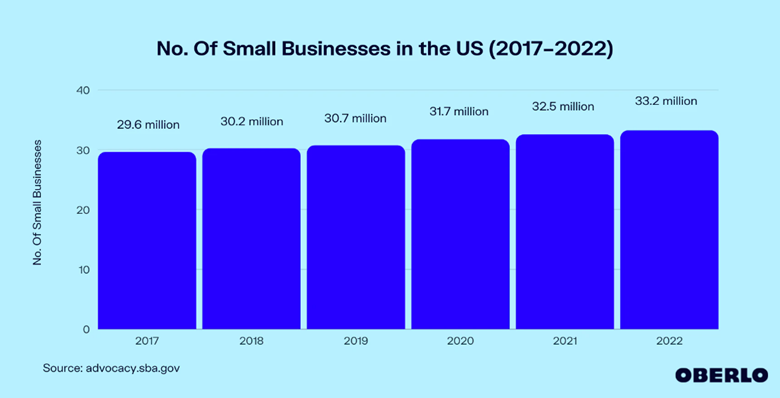
Your guide to the secrets of business valuation and exit planning
Valuing a business can be an extremely complex process when the audience is the IRS or the Court System, but for most business owners trying to get a sense of their business value for the purpose of a sale it is more straightforward.
We’ve created this guide for business owners to gain a better understanding of the fundamentals of business value and spark some ideas around exit planning. This guide focuses on privately held businesses in mature industries, not tech start-ups. This includes “Main Street” businesses to lower middle market businesses. Let’s group them together and call them “SMBs”, a popular acronym to define small and medium-sized businesses. Before we dive into the numbers, it is important to define the key stakeholders.
Potential Buyers
In our experience, SMB owners do not spend much time thinking about the potential buyers of their businesses. There are a number of methods to transition a business, and the method you choose should align with your desired goals, whether it be immediate liquidity, legacy, or both.
Internal – A buyer for the business could be an employee, manager, business partner, family member, or Employee Stock Ownership Plan.
External – Strategic buyer (i.e. competitor), or financial buyer (i.e. private equity)
Internal buyers can be a great way for companies to transition the business, preserve legacy, and reward internal managers, employees, or family for their hard work or loyalty. However, it may take years to develop this succession plan. Owners that don’t consider these options will miss this opportunity.
External buyers will typically pay more to acquire a business due to potential synergies or diminished competition. However, external buyers will exert more control or influence over the future of the business and this may include layoffs or relocation.
Transferrability
Only 20-30% of businesses marketed for sale actually sell according to research by the Exit Planning Institute. Before we get into the attributes of a business that affect its price, you must first consider whether the business can be transferred at all.
The top three reasons for a business not being marketable in our opinion are:
1. Poor financial quality. A business must be able to produce timely and accurate financial statements at a moment’s notice. If a buyer cannot assess the business’ ability to generate cash flow, the business has no value.
2. Owner centricity. If all the trade secrets, relationships, and procedures leave with the exiting owner, the business has no value.
3. Customer concentration. If the majority of business is concentrated amongst a few clients, the business has no value. The loss of one or more of these clients would devastate the business.
If the business has strong financial quality, a decentralized business model, and little-to-no customer concentration, now we have a business that is able to be sold or transferred.
Valuation
Many firms offer “business valuations.” A certified valuation report is written by a credentialed appraiser and assigns value to a business based on an Income Approach, Market Approach, and Asset Approach.
The Income Approach is based on the premise that the value of any asset is the present value of future cash flows. In this method, an appraiser will assess historical cash flows (Capitalization of Earnings Method) or create projections (Discounted Cash Flow Method) to value a business. The cash flow stream is then discounted or capitalized according to the risk free rate of return and various risk premiums including company-specific business risk.
The risk premiums and application of the various methods can be complicated, but ultimately, the income approach is a function of earnings and risk. Risk can be broadly thought of as the risk of the likelihood the earnings will continue in the future.
The Market Approach is based on the premise that the value of an asset is determined by the price of similar assets in the market. Using this approach, the appraiser will determine the appropriate cash flow and apply various multiples. Common multiples for SMBs are revenue, EBITDA, and SDE. EBITDA is an acronym for Earnings before Interest, Taxes, Depreciation, and Amortization. In short, it is a common measure of true cash flow in the business. SDE, or Seller’s Discretionary Earnings, takes cash flow one step further. It adds in compensation for a single owner plus any personal expenses. SDE is more commonly used in Main Street businesses that can be operated by a single owner. EBITDA is more commonly applied to larger businesses with less direct owner involvement and a proper management team.
The Asset Approach is determined by calculating the market value of the assets of a business. This method is typically only applied in a liquidation scenario. In the income approach and market approach, we assume that the value of a business is more than the value of the tangible assets because the assets are used to generate positive cash flow. If that is not the case, the asset approach may be applicable.
Certified appraisers analyze all three methods and arrive at a conclusion of value using one or more of the approaches. Business brokers typically rely on the market approach when determining a list price for a business. Brokers will calculate SDE for 3 years and apply a multiple of SDE. We’ve seen most brokers average SDE over a 3 year period and multiply it by 3 (more to come on multiples). More aggressive brokers will apply the multiple on the best year, or most recent period.
Market multiples for SMBs are published in a handful of databases. The downside to relying on comparable transactions is the limited information. While you can see the transaction price, date, and the market multiples, you cannot get a sense of the qualitative attributes of a business such as strength of management, location, employee tenure, etc. To get a glimpse of businesses listed for sale, check out BizBuySell.
Rules of Thumb
There are a vast amount of factors that affect the multiple a business may receive on the market. To name a few, let’s consider financial statement quality, owner dependency, customer concentration, barrier to entry, capital intensity (the amount of equipment required to operate), location, profitability, management, customer contracts, recurring revenue, etc.
Revenue: 40-60% of annual sales (accounting firms and insurance agencies excluded)
SDE: 2-3.3x
EBITDA: 3-5x
Most main street and lower middle market businesses will fall into these ranges. Generally, the larger the business the higher the multiples due to lower perceived risk. We’ll characterize the low and high end of these ranges:
Low end
- Retail business relying on walk-in customers
- Minimal barrier to entry
- Low capital intensity (no equipment required to operate)
- Little repeat business
- Low employee loyalty
- Business has been entirely dependent on a single owner
- Low profit margins
High end
- Annual or multi-year contracts
- Contracts are documented and transferrable
- Repeat business
- Product differentiation
- High profit margins
- Superior location with multi-year lease
- Strong management / no owner dependency
- Specialized equipment required to operate
Accounting firms and insurance agencies trade a little differently. These businesses typically are priced based on multiples of revenue or annual commissions.
Exit Planning
We hope this guide has provided some transparency and insight into the value of your business. Once you have an understanding of the value of your business, you can better plan and prepare for life beyond the business. The sale of your business is typically a one-in-a-lifetime event and it should be treated as such. Statistically, that has not been the case. According to the Exit Planning Institute and their State of Owner Readiness survey:
60% of business owners do not understand their exit options
30% have no transition plan in place
49% have done no planning at all
80% have not formed a transition advisory team
An advisory team comprises experts in distinct fields all working towards your successful transition. Financial advisors can provide guidance with the amount of after-tax liquidity you need to live the lifestyle you want. Estate planners can help minimize tax impact and provide for your dependents and loved ones. M&A attorneys will guide the transaction and ensure your interests are represented and protected. An exit planning advisor serves to bring the team together, working towards the same goal on the owner’s timeline.
Mark Ahern started Amp Business Valuations in late 2020. He has a background in financial services and a passion for helping small businesses. Mark was formally trained in commercial real estate and C&I credit. He also held posts in retail banking, retail mortgage, and loan operations. Mark earned an MBA from DePaul University and teaches Business Finance at Regis University.





